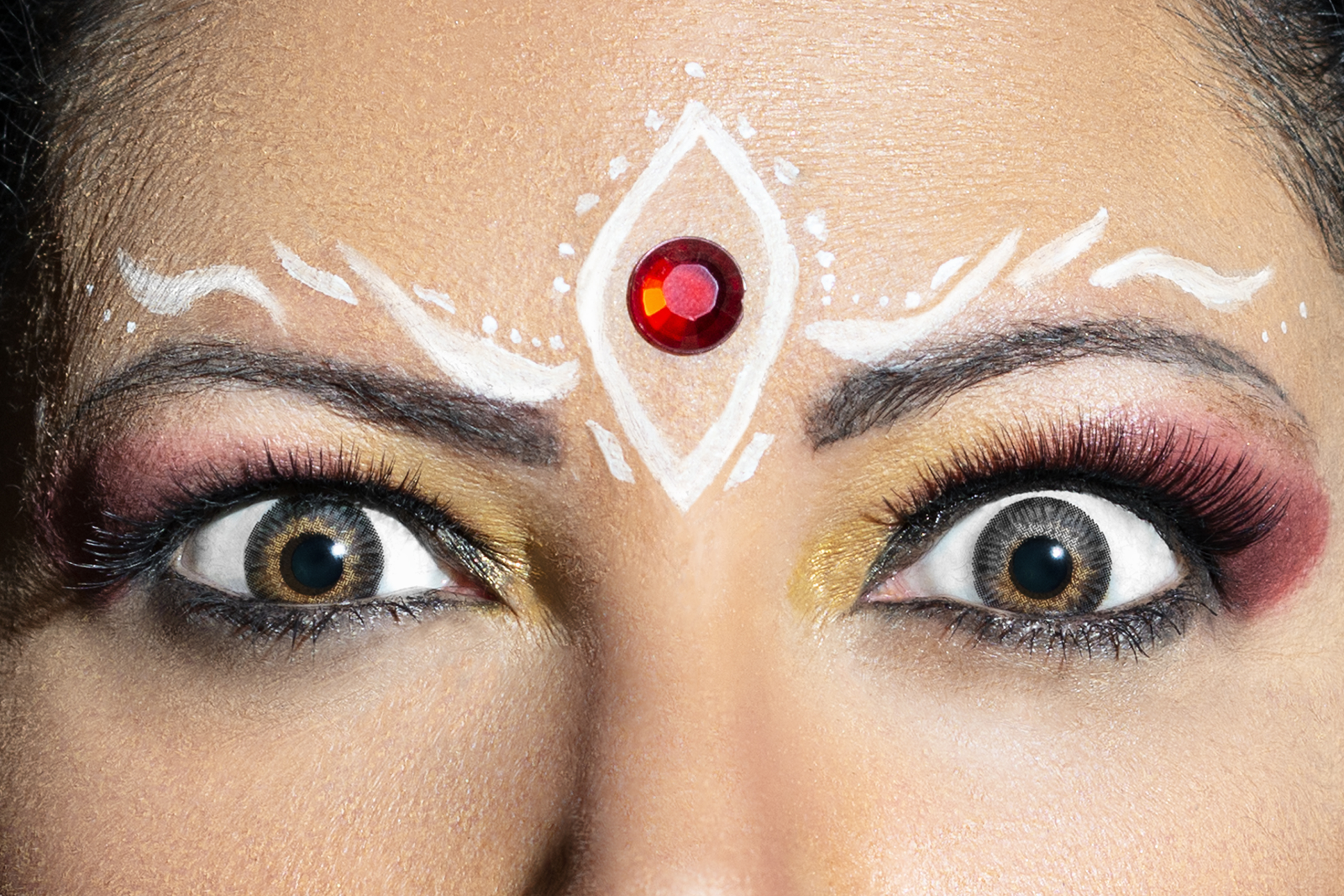The story behind The Durga Chronicles
From Artistic Director Priya Srinivasan
Growing up in Naarm, Melbourne was a dichotomous existence! I came from suburbia but through dancing, I was exposed to queerness and to radical artistic practices because of my dance teacher Dr. Chandrabhanu and his partner, the visual artist Geoffrey Goldie. Dancing was my only constant. I lived in a very racist, white suburb and was probably the only Asian, let alone Indian, in my school for many years. I suffered a lot under that, and dance empowered me. Even though there are aspects in Indian dance that are disempowering, you are never stuck as one character in a dance piece. So, you can be a relatively weak character one moment, and then strong in the next second. In one performance, you can switch from portraying a woman to a man, to animals, spirits, trees, demons, gods, and goddesses.
One of the most powerful moments for me was when I learnt the dances about the Goddess Durga—who is an eight-armed, weapon-wielding warrior goddess riding a lion into battle. She chops off demons’ heads and kills them. The demons can be understood as literal but also metaphorical demons that represent ego, jealousy, selfishness, anxiety, fear, and obsessive compulsion. When you’re growing up and only seeing blonde-haired, blue-eyed figures on television—there’s no representation of you at all. Embodying this powerful, brown goddess was an incredible alternate model of femininity.
I think that’s why the form became so important to me—it became intertwined with my identity. Dance was my haven from racist pressures for assimilation. At that age, I didn’t fully understand how race worked, but I knew I didn’t belong. I only felt like I belonged in the dance classroom and on stage.
In later years, after being a professional dancer with the Bharatam Dance Company, then traveling overseas and getting a Masters and PhD, and later becoming a professor of Dance at the University of California – all whilst being an artist – I became interested in political and social justice issues that could be worked on through the dance I had learned. I knew my form was labelled traditional but through my research I showed how contemporary dance, and my dance, were just two sides of the same coin.
So, what we call ‘traditional’ dance is actually modern and contemporary, and what we call ‘contemporary’ dance in America and Australia are rooted in these historic and Indian forms (among other forms of appropriation including Asian, black, and Native American forms as well). When I discovered this, I was set in an entirely different direction. How could I continue doing the so-called ‘traditional’ Indian or ‘contemporary’ western form without acknowledging the fact that the histories were so problematic? At the same time, I was wondering how to work with the forms embedded inside my body by exposing these appropriations through interruption to decolonize the practices?
Working towards resolving these questions, I realised I didn’t have to let go of the technique that I had been trained to be contemporary. There’s a deep misconception that to be contemporary in Australia, you have to do Western contemporary dance or theatre. If you are perceived to be engaging in ‘ethnic’ forms, you’re not considered ‘high art’, you’re not considered contemporary. I am working against this idea, and this has been the root of my activism since moving back to Australia, among other social justice issues such as climate change, ecofeminism, and violence against women.
I was very moved by the outpouring of grief, rage, protests, and the calls for social justice movements that emerged in 2012 -2017 from the Nirbhaya case in Delhi and Jill Meagher, Eurydice Dixon and so many other cases in Naarm. That is when I began questioning how I bring together the idea that on one hand we worship Goddesses in India like Durga who is all powerful, and on the other, we destroy real women every day in small and large ways.
I wanted to use women’s voices to question how the “me” becomes the “we”. So was born the idea of a Carnatic choir (a classical south Indian form usually only performed as a solo). I began working with highly talented musicians Uthra Vijay and Hari Sivanesan and the brilliant dancer and my co-Artistic Director Philipa Rothfield to explore these concerns.
I am deeply grateful for an incredible team of artists including international folks from India (Priyadarsini Govind), Malaysia (Govin Ruben), and Marcus Salvagno, as well as the incredible contributions of a Kalari Master (Lalita Yagnik) in martial art training and Matangi Prasan in chari training. I think The Durga Chronicles is a world first in many ways, as it brings together South Asian music, dance, theatre, and visuals from a decolonial framework, and takes them to the contemporary at Arts House.
- Priya Srinivasan
The Durga Chronicles by Priya Srinivasan, Philipa Rothfield and Uthra Vijay
Saturday 3 – Sunday 4 September 2022
Sat, 1pm & 7pm
Sun, 1pm & 5pm
